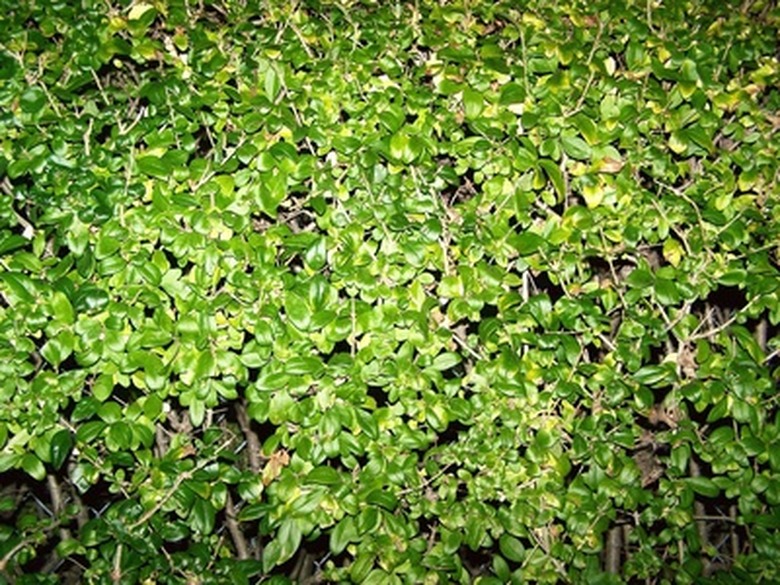Ligustrum Tree Care & Trimming
Ligustrum trees, also commonly known as privet trees, are versatile plants in need of moderate care. Though they are adaptable to a wide variety of conditions, making them a less challenging plant to maintain, their rapid growth means consistent observation and trimming is essential in cultivating a healthy, vigorous tree for your home garden.
Description
Ligustrum species trees include evergreen, semi-evergreen and deciduous options with a wide variety of cultivars. Displaying flowers that often emit a strong fragrance, ligustrums are typically grown in the home landscape as small trees, hedges or screens due to their aesthetic impact, ease of growth, and well-suited habit for shaping, according to the Clemson University Extension.
Types
Ligustrum japonicum, commonly referred to as Japanese privet, is an evergreen ligustrum species often utilized in the home garden as a small tree. Growing to a height of 10 feet with white, aromatic flowers and green foliage, care for this ligustrum by avoiding wet sites. Ligustrum japonicum thrives in full sun to partial shade and tolerates problematic environments like drought and extreme temperatures. Ligustrum ovalifolium, or California privet, is a semi-evergreen option that grows to a height of 15 feet, displaying white, fragrant flowers and green leaves. Necessary care includes consistent pruning in warm, humid climates. Ligustrum vicari, referred to as vicary golden privet, is a smaller plant with a height of 6 to 12 feet and rich golden leaves. Grow in full sun and avoid heavy pruning, according to the Clemson University Extension. Research and choose a ligustrum based on your garden's needs.
- Ligustrum trees, also commonly known as privet trees, are versatile plants in need of moderate care.
- Ligustrum ovalifolium, or California privet, is a semi-evergreen option that grows to a height of 15 feet, displaying white, fragrant flowers and green leaves.
Culture
Though different species and varieties of ligustrum trees have particular needs, grow them all in full sun to partial shade for appropriate care. Fertilize ligustrums at a rate appropriate to your particular plant with up to three annual applications. Make the first two applications in spring and the last during summer, according to the Clemson University Extension. Plant your ligustrums as specimen trees, as grouped trees or in containers.
Warning
Maintain consistent care and keep a close eye on your ligustrum tree. Ligustrums are susceptible to a variety of pests, including aphids and scales. These pests are sucking bugs that suck tissue fluids from the plants, leading to cosmetic damage, decline and the potential for fungal infection. If you suspect your ligustrum is infested with a pest or if you notice decline or discoloration often caused by disease, act immediately to prevent a severe problem. Trim away and destroy affected plant parts. Identify the problem and determine an effective control whether cultural or the application of chemicals like insecticides. Contact your local county extension agent or a licensed professional for assistance.
- Though different species and varieties of ligustrum trees have particular needs, grow them all in full sun to partial shade for appropriate care.
- These pests are sucking bugs that suck tissue fluids from the plants, leading to cosmetic damage, decline and the potential for fungal infection.
Considerations
With a rapid growth rate and abundant foliage, ligustrum trees need consistent trimming for an aesthetically pleasing appearance and for proper growth and development. Trim ligustrums any time of the year, removing damaged twigs or employing heavy pruning to keep your tree shaped as desired. Using pruning shears, make clean cuts to avoid wounding your ligustrum. Always sanitize your pruning shears between cuts and from one plant to the next to avoid the potential spread of disease.
